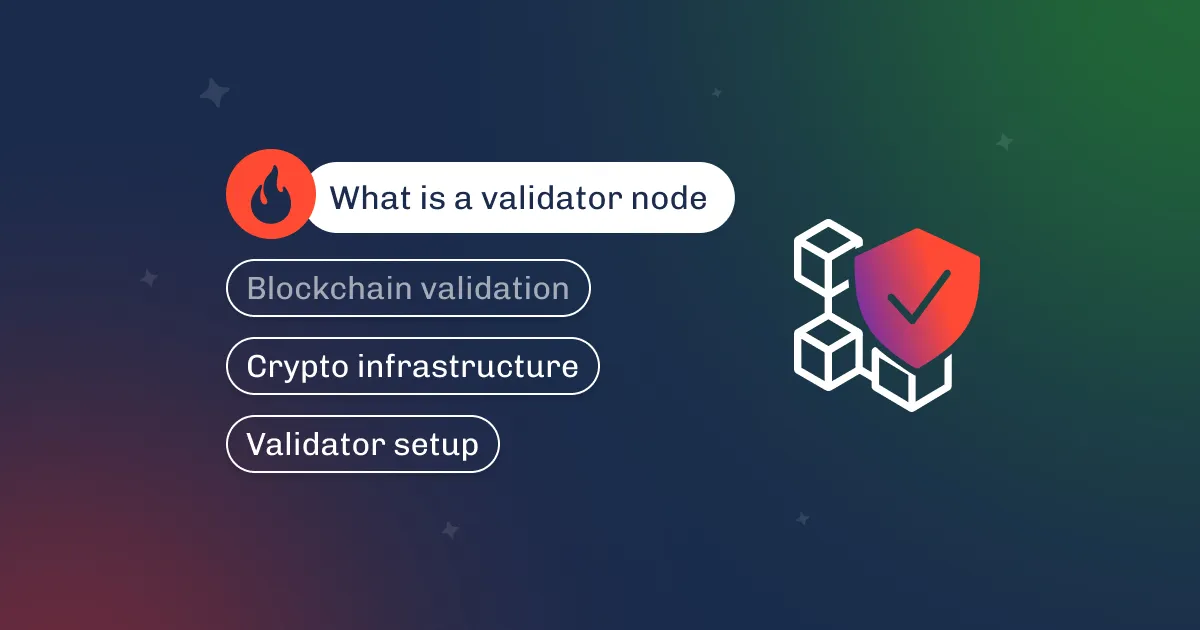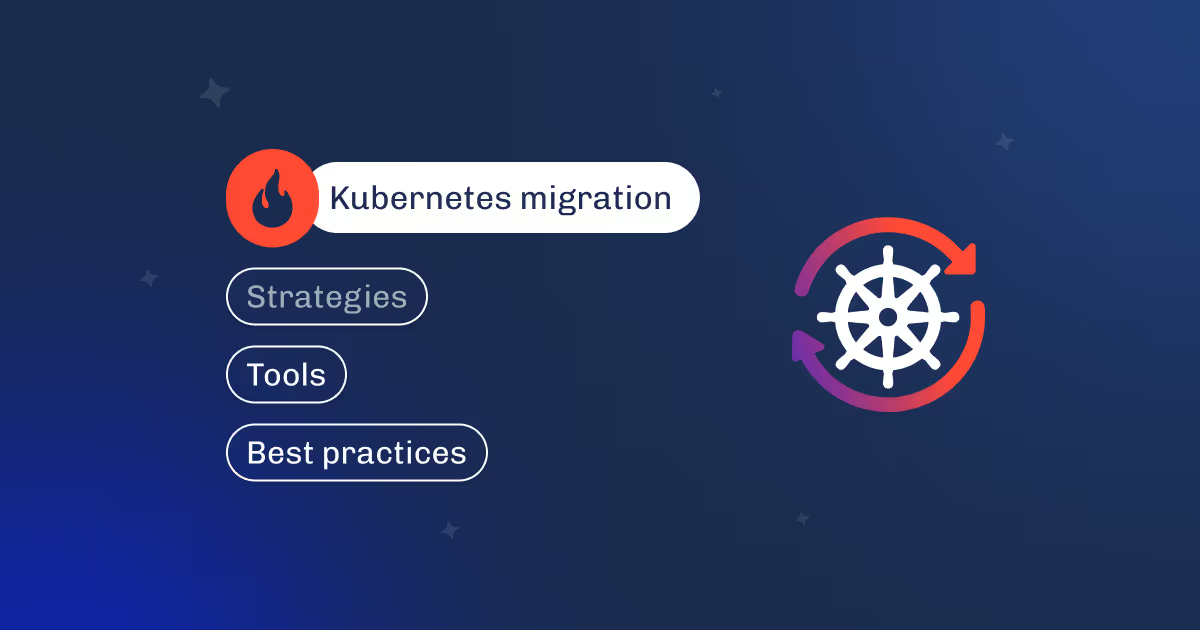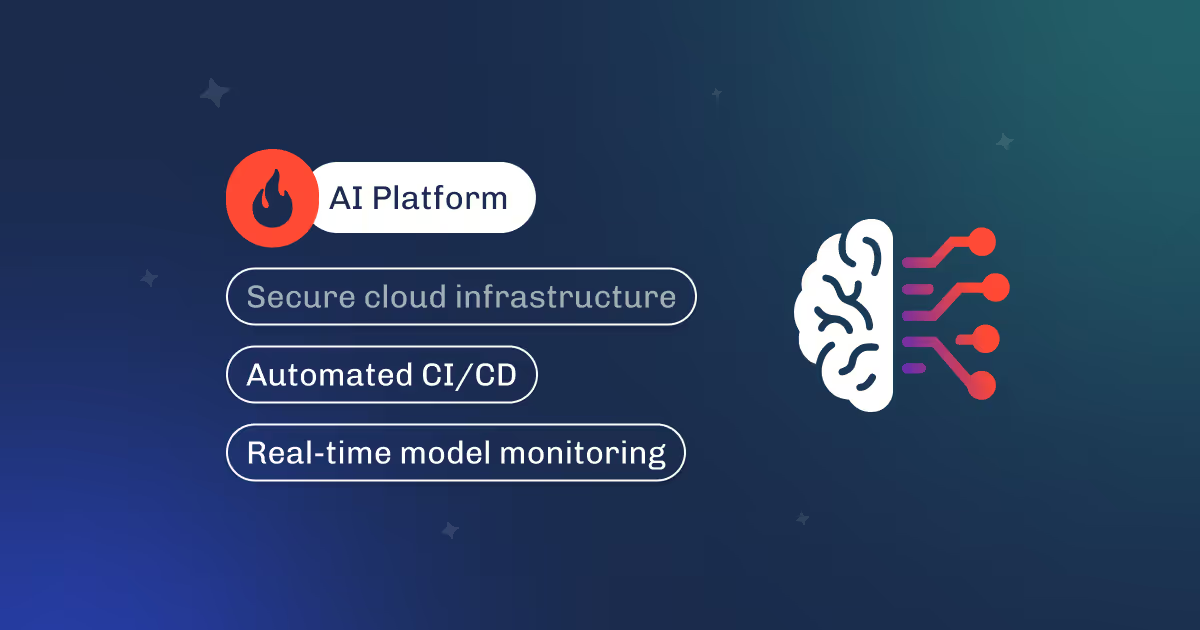

When an early-stage AI startup in retail analytics approached us, they had a clear vision but a big challenge ahead. Their team was building impressive machine learning models in Jupyter notebooks and serving business logic through lightweight Python microservices—great for prototyping, but far from ready for enterprise-scale production.
With plans to onboard more than 20 new customers in just six months, they needed a complete transformation: a secure, automated infrastructure on Google Cloud, a reliable CI/CD process for all backend and ML services, and a lean MLOps layer to manage models in production.
In this case study, we’ll walk through how we built their platform from the ground up, including Terraform-provisioned infrastructure, GitOps deployments, Vertex AI pipelines, model versioning, and real-time monitoring.
Our client* is an early-stage AI startup building advanced analytics solutions for large retail chains. Their platform combines sales, inventory, and customer behavior data to generate actionable insights, relying on machine learning models to predict demand, optimize pricing, and improve store operations.
At the time they approached us, the team’s workflow was optimized for speed of experimentation: data scientists worked in Jupyter notebooks, while backend developers served business logic via lightweight Python microservices.
*At this time, we cannot disclose the company’s name due to NDA restrictions, but all technical details and results presented here are based on the actual project.
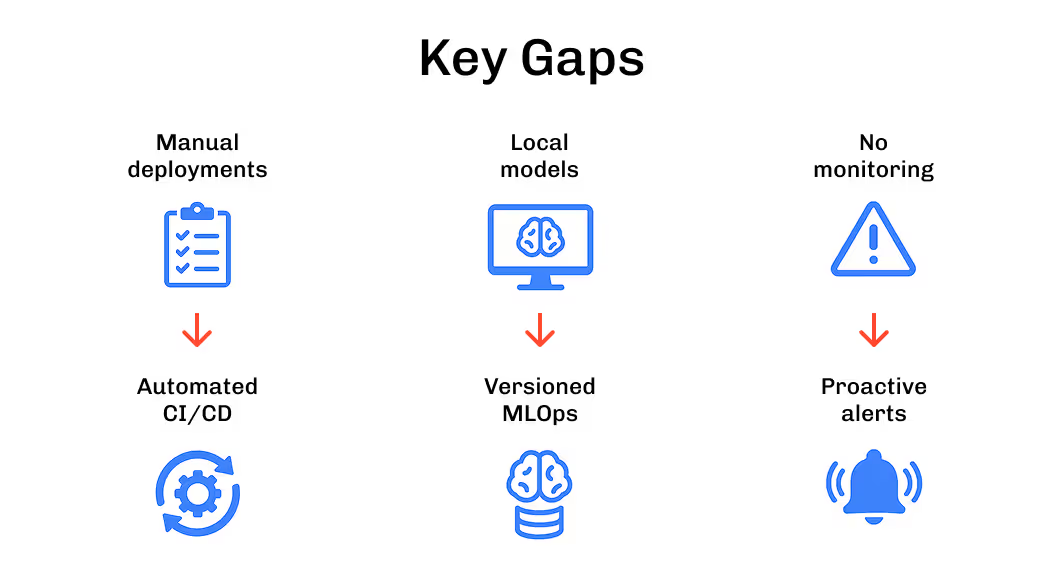
To onboard more than 20 new enterprise customers within six months, the startup needed to transform its prototype into a robust, production-ready cloud platform. The priorities were clear:
At the time, deployments were manual and time-consuming, with no automated testing or release process. Models existed as files passed between team members, making it difficult to track versions or roll back changes.
Any scaling effort without fixing these gaps would have risked outages, inconsistent model performance, and long lead times for new customer onboarding.
We began by defining every infrastructure component in Terraform, ensuring the entire setup is reproducible and version-controlled. The client’s requirements demanded three fully isolated environments—development, staging, and production—each deployed in its own GCP project for strict separation of workloads and permissions.
For each environment, Terraform provisions:
The infrastructure was built with modular Terraform stacks so that changes to one environment don’t cascade unexpectedly to others. Every change is peer-reviewed via GitHub Pull Requests before being applied through CI/CD.
To keep deployments predictable and auditable, we implemented FluxCD as the GitOps controller. It continuously reconciles Kubernetes manifests in Git with the actual state of the cluster.
This means:
GitHub Actions handles the build and delivery pipeline:
This approach reduced deployment times from 2–3 days to under 15 minutes per service.
Security was a non-negotiable requirement due to the retail domain’s sensitivity. We implemented:
We integrated a monitoring stack using VictoriaMetrics for metrics storage and Grafana for visualization. Custom dashboards were created for:
Alerting rules are defined in Grafana and routed to Slack via Alertmanager. For example:
This setup ensures that both infrastructure and application-level issues are detected before they impact end users.
Given the upcoming 20+ enterprise clients, the architecture needed to support multi-tenancy without duplicating infrastructure. We used namespace-based isolation in GKE combined with Helm charts for templating deployments per customer. Resource quotas ensure that a single tenant cannot monopolize cluster resources.
GKE node pools were optimized with:
We also enabled VPA (Vertical Pod Autoscaler) recommendations for fine-tuning container resource requests over time.
Once the DevOps foundation was in place, the focus shifted to automating the client’s machine learning workflows to the same level of reproducibility and transparency. We chose Vertex AI as the central MLOps platform, integrating it tightly with the existing CI/CD setup so that deploying a model would feel no different from deploying an application.
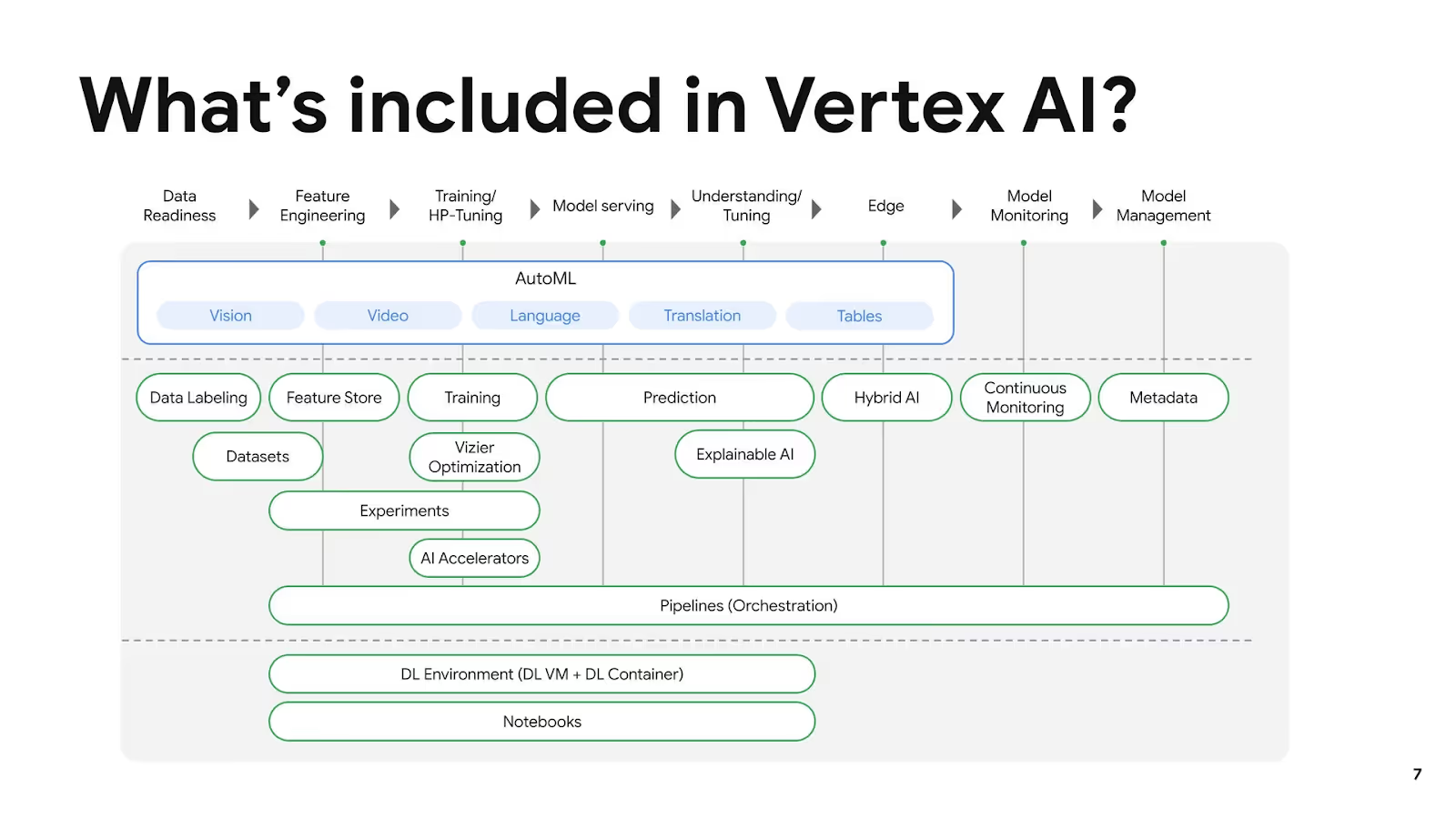
The first step was building a modular ML pipeline with Vertex AI Pipelines and the Kubeflow Pipelines SDK. This pipeline automated the full model lifecycle, encompassing data ingestion and preprocessing, model training and evaluation, registration in the Model Registry, and deployment to production endpoints. Every step was containerized and parameterized, allowing the same workflow to be reused across multiple models and datasets. The entire process was triggered automatically from GitHub Actions, ensuring that any change in model code or configuration led to a fresh pipeline run.
Experiment tracking was a critical improvement. Previously, model versions were shared as files on local machines, often without clear lineage. With Vertex AI Experiments, every pipeline execution was logged with its parameters, datasets, and metrics. Within the first month, over seventy experiments were recorded, giving the team a transparent history of how each model evolved and why certain versions outperformed others. This level of traceability proved essential when validating models for enterprise customers.
Model registration became the backbone of deployment governance. Each successful pipeline run resulted in a model entry in the Vertex AI Model Registry, complete with metadata on input/output schema, evaluation metrics, and data lineage. Deployments to Vertex AI Endpoints were directly tied to these registry entries, allowing the use of canary releases to gradually roll out new models. This approach minimized risk: if a new version degraded performance or accuracy, traffic could be rolled back within minutes without impacting all users.
Monitoring in production was designed to go beyond basic uptime checks. Vertex AI Model Monitoring was configured to track feature drift, prediction drift, and endpoint latency. Baselines were computed from training data, and daily monitoring jobs compared live inputs against these baselines. Two drift events were detected in the first month, both of which triggered retraining workflows before the issues could affect customers. Alerts were delivered to Slack through Cloud Functions, giving the data science team immediate visibility into anomalies.

After twelve weeks of focused work, the transformation was visible at every level—from infrastructure resilience to the way models were deployed and monitored. What began as a set of local notebooks and loosely connected microservices became a fully automated, enterprise-ready AI platform running on Google Cloud.
DevOps achievements:
MLOps achievements:
Operational impact:
In practical terms, the client now has a platform that scales without scaling the operational burden. Developers focus on building features and improving models; DevOps maintains a healthy, secure, and cost-efficient infrastructure—a combination that enables fast onboarding, consistent performance, and continuous improvement.
By building a solid DevOps foundation on Google Cloud and a lean MLOps layer with Vertex AI, we transformed the client’s local prototypes into a secure, automated, and scalable production platform. Infrastructure, microservices, and ML models now share the same delivery pipelines, monitoring stack, and security controls.
The result: onboarding new enterprise customers in hours, deploying models with canary rollouts, maintaining sub-200ms inference latency, and catching drift events before they impact users. The platform is ready to scale to 20+ clients without adding operational complexity.
If you’re facing similar scaling challenges with your AI infrastructure, our team can help you design and deliver a platform that’s ready for growth from day one.




